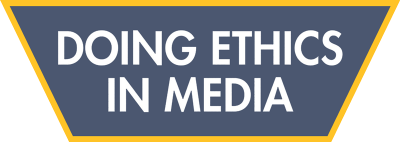By Laura Testino
In Walt Disney’s “Beauty and the Beast,” the cartoon candlestick character, Lumière, leads a musical number featuring the other anthropomorphic kitchenware. Soon after the song, “Be Our Guest” begins, Lumière exclaims to “Try the grey stuff, it’s delicious!”
But some journalists would do no such thing: the black and white stuff is much more preferable. Entire codes and books are devoted to deciphering the gray ethical matters journalists deal with daily.
Because ethical dilemmas occur with such frequency in the professional world, it is sensible to require journalism students to practice with a code throughout their collegiate education. At The University of Alabama, the Society of Professional Journalists Code of Ethics is implemented in most courses, but is not officially used throughout the Department of Journalism. It should be, unless another code of ethics is drafted for students.
Cameron Albert-Deitch, a 2015 graduate from the Medill School of Journalism at Northwestern University, said that ethics, as well as objectivity, accuracy and transparency, are the crucial elements in journalism education. Although he doesn’t think a school-specific ethics code is necessary for success – he does not believe Medill has its own – schools should have standardized ethical practices across their courses, he said. Medill uses SPJ’s code as a baseline.
“I certainly wouldn’t fault other schools for having” their own code, Albert-Deitch said. “I would, however, fault schools for not using any code of ethics at all.”
Teaching ethics to students so they may internalize the importance of following an ethical code is most vital, he said. Psychological theories support this.
According to Albert Bandura’s Social Learning Theory, individual differences, behaviors and environmental influences simultaneously influence acting and learning. This translates to a “monkey see, monkey do” type of behavior pattern for children, who are learning rules and developing cognitive control and reasoning.
Ian M. McDonough, an assistant professor in the Department of Psychology at The University of Alabama, said that learning styles change with age maturity.
“Once people mature, they have had many years to learn and practice following rules, and they have the cognitive control capacity to implement new rules,” McDonough said. “In addition, ideals and morals have developed so adults can make their own set of rules (or ethics) to decide when to follow others.”
While seeing an authority figure perform an action may provide a larger weight for learning, college-aged students are more likely to make decisions for themselves using their basic ethical standards. This occurs because students are near full maturation, McDonough said.
“Instead of learning through experience (and waiting to receive positive or negative reinforcement), the student can imagine scenarios that might result from following the new code,” he said. “In other words, one might think, ‘If I follow this code, will this result in a good or bad outcome?’ If one can think of more bad outcomes than good outcomes, then they might choose not to follow the new code.”
Choosing to follow a code of ethics is also determined by the transparency of the code. An effective way to aid in the retention and motivation to use the code would be to have students write essays or debate the code, thereby convincing themselves of why to use it, McDonough said.
At the University of Missouri’s School of Journalism, there isn’t a school-wide code, but most of the professors refer to the Missouri Press Association Creed – also known as The Journalist’s Creed – which was written over a century ago by Walter Williams, the first dean of the Missouri School of Journalism. Tess Malone, who received an M.A. from the school in 2014, said that the creed was featured in the majority of course syllabi and was engraved on a brick wall near campus.
“I even remember writing a reflection paper on how I personally followed the creed for a mass media theory seminar,” she said. More specific ethics codes, addressing things such as attire and conflicting-interests, were discussed during the first week of certain courses.
Malone would support a journalism-school-specific code of ethics for Missouri, but would see it as more of a set of guidelines, rather than rules to follow. Plagiarism and fact-checking errors would have definite consequences, for example, but other guidelines don’t need to be as rigid with intense consequences, she said.
“A lot of these [ethics] are straight forward and self-evident, but it’s better to be safe than sorry and explain even the most obvious rules,” Malone said. “Also, it’s always easier to be overly strict than to add restrictions later.”
And making some of these ethical guidelines black and white gives journalists – especially student journalists – something more definitive to use when dealing with the gray stuff, which may always be shy of being a “delicious” topic.
But, having a set of standard guidelines certainly makes the gray stuff less repulsive.
Laura Testino is a student in Dr. Jen Hoewe’s JN 499 class at The University of Alabama.
